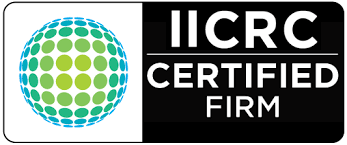The Role of Personal Protective Equipment (PPE) in Biohazard Remediation
In the realm of biohazard remediation, the utilization of appropriate Personal Protective Equipment (PPE) is paramount to ensure the safety of professionals handling hazardous materials. PPE serves as a critical barrier against exposure to infectious agents, chemical contaminants, and other potential hazards encountered during biohazard cleanup operations.

Understanding the Importance of PPE in Biohazard Remediation
Biohazard remediation involves the cleanup and decontamination of environments contaminated with biological hazards such as bloodborne pathogens, bodily fluids, and other potentially infectious materials. Professionals in this field are at risk of exposure to diseases like HIV, hepatitis B, and hepatitis C, making the use of PPE essential to minimize health risks. Proper PPE not only protects the individual worker but also helps prevent the spread of contaminants to others and to clean areas.
Types of Personal Protective Equipment Used
The selection of PPE in biohazard remediation depends on the specific hazards present and the level of exposure risk. Essential components typically include:
-
Protective Clothing: This includes coveralls or suits made from materials resistant to penetration by hazardous substances. These garments often feature hoods and boot covers to provide full-body protection.
-
Gloves: Disposable gloves, such as nitrile or latex, protect the hands from direct contact with biohazardous materials. In some cases, double-gloving is recommended for added protection.
-
Respiratory Protection: Depending on the nature of the hazard, respirators ranging from N95 masks to full-face respirators with HEPA filters are used to protect against inhalation of harmful aerosols and particulates.
-
Eye and Face Protection: Goggles and face shields safeguard against splashes and airborne particles that could affect the eyes and mucous membranes.
-
Foot Protection: Boots or shoe covers prevent contamination of footwear and reduce the risk of spreading hazardous materials beyond the affected area.
Proper Usage and Protocols
The effectiveness of PPE relies not only on its selection but also on proper usage. Key protocols include:
-
Donning and Doffing Procedures: Correctly putting on (donning) and removing (doffing) PPE is crucial to prevent self-contamination. Training in these procedures ensures that contaminants do not come into contact with the skin or clothing during removal.
-
PPE Levels: The U.S. Department of Health & Human Services has established four levels of PPE, ranging from minimal protection (Level D) to the highest level of protection (Level A), which includes fully encapsulating suits with self-contained breathing apparatus. The appropriate level is determined based on the specific
-
Inspection and Maintenance: Regular inspection of PPE for tears, punctures, or other defects is essential. Damaged equipment must be repaired or replaced promptly to maintain protective integrity.
-
Compliance with Standards: Adherence to guidelines set forth by organizations such as the Occupational Safety and Health Administration (OSHA) ensures that PPE meets established safety standards.
Conclusion
In biohazard remediation, the proper selection and use of Personal Protective Equipment are critical components of a comprehensive safety strategy. By employing appropriate PPE and adhering to established protocols, professionals can effectively mitigate the risks associated with exposure to hazardous biological materials, ensuring their safety and that of the broader community.

















